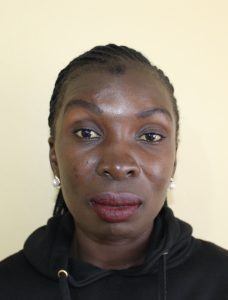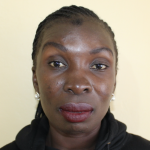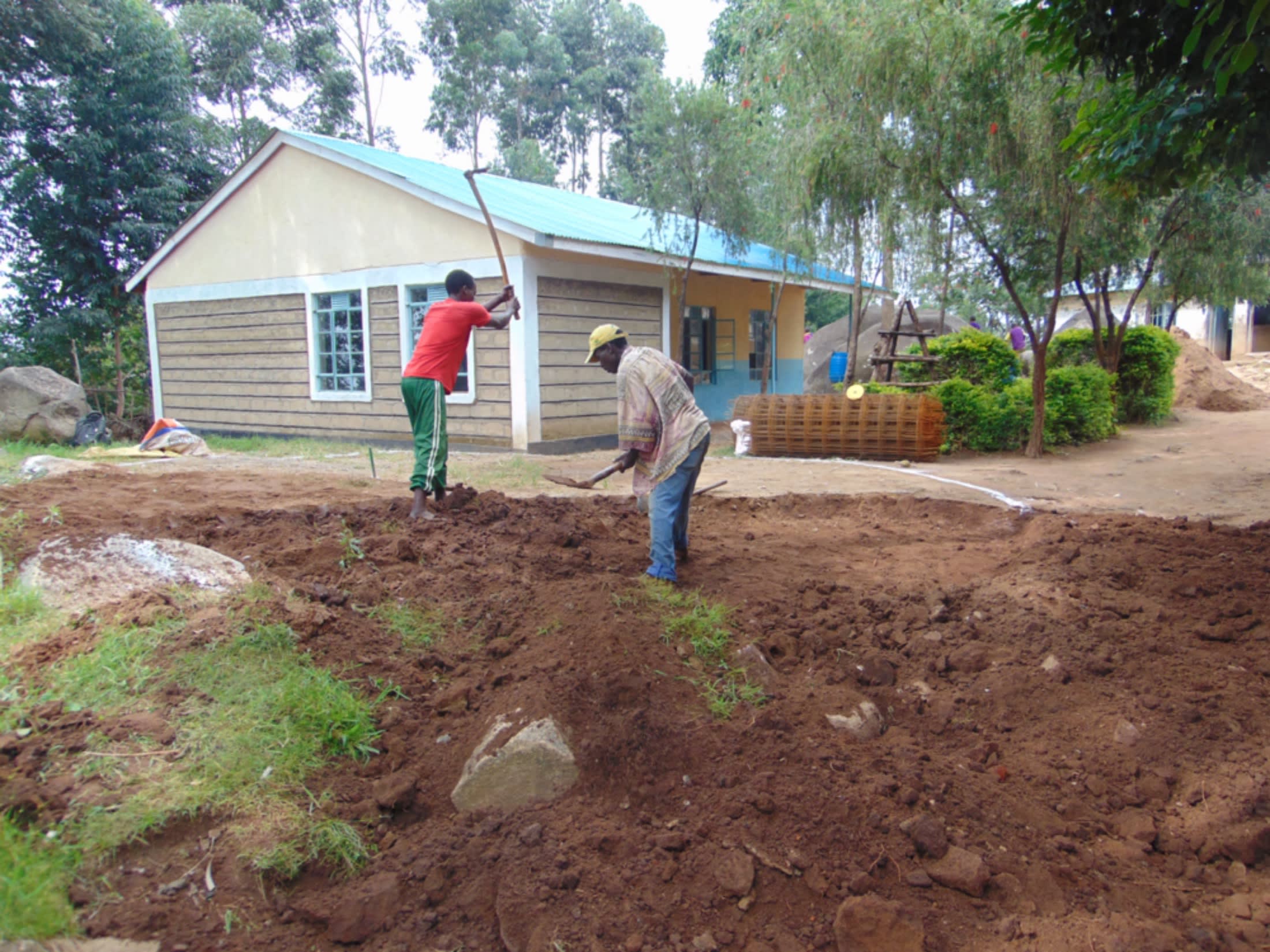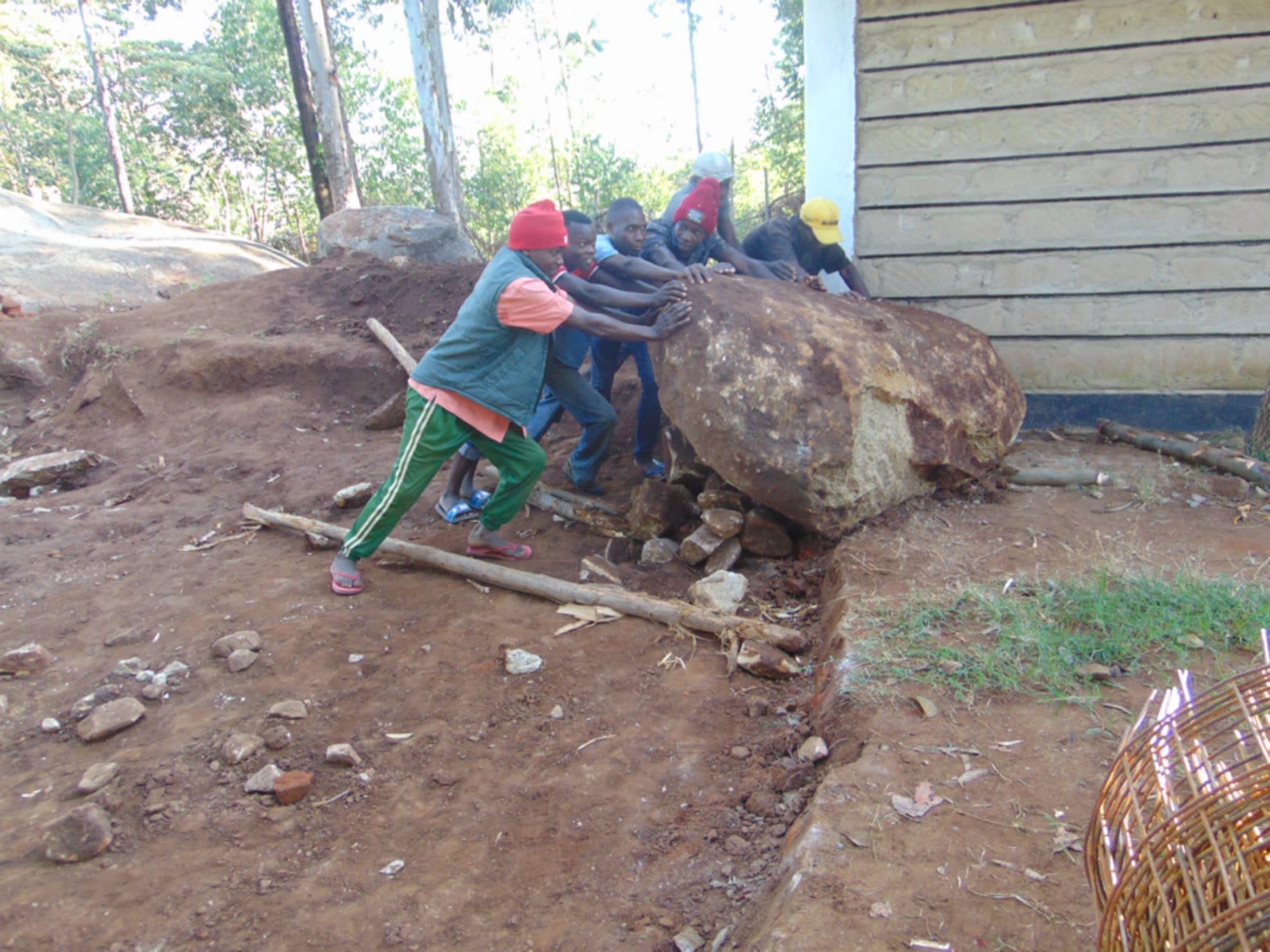"As the head teacher of this school, I am always sad to see young children coming to school in the early morning cold with water; some of them come from so far," said Head Teacher Mr. Ronald Mahalo.
Mr. Mahalo works at Kapsogoro Primary School which currently serves 382 students taught and supported by 14 teachers and staff. Founded in 1998, this school has never been able to provide enough clean and safe water for its daily needs.
Currently, the school predominantly relies on students bringing water from home. Their only other water source is a small, 5,000-liter plastic rain tank that does not meet their needs for a population their size. It quickly goes dry.
Depending on young children to bring water is problematic for many reasons, not least of which is that they physically cannot carry enough water to meet all of the school's drinking, cleaning, and kitchen needs. Almost all students are sent home again mid-day during their lunch break to fetch water once more, and yet they still sometimes run out before the end of the day.
"The school feeding program requires a lot of water, hence when we do not have enough water most times, the school programs get interrupted, and I am the one answerable. This problem of lack of water in our school really denies me peace and affects my work as the head teacher, not to mention the dream of getting the pupils' scores higher in the national examinations," said Principal Mahalo.
The pupils also waste a lot of time carrying water to school, and as the principal mentions, it makes them tired and negatively impacts their academic performance.
"Carrying water from home really takes a lot of my time since I am a national examination candidate and I hope to perform well," explained 14-year-old student Eunice.
"At home, it's not easy to carry water that you didn't bring from the river already. Hence, you need to first go home, then collect water either in the evening after school or in the morning before leaving for school. Sometimes it's risky to go to the river late or very early because you also need to catch up with school time, so we will be fetching it alone and in the dark."
As Eunice knows, girls and women are most at risk when fetching water in remote and vegetated areas, especially in the dark. But for Eunice and her fellow students, their options are to either risk their safety or go without water. The choice is hardly a fair one.
Adding to the water stress at Kapsogoro Primary School are the ever-present cases of waterborne illnesses; typhoid and diarrhea are rampant among students. The containers students use to fetch water are not always clean, and some of the sources they rely on are questionable. Because the water is combined for use, even 1 contaminated source means everyone suffers. Without clean latrines or handwashing stations outside of them, the diseases continue to cycle through the student body and even the teachers, driving absenteeism year-round.
What We Can Do:
Rain Tank
A 75,000-liter rainwater catchment tank will help alleviate the water crisis at this school. The school will help collect the needed construction materials such as sand, bricks, rocks, and water for mixing cement. We will complement their materials by providing an expert team of artisans, tools, hardware, and the guttering system. Once finished, this tank will begin catching rainfall that will be used by the school’s students and staff for drinking, handwashing, cooking, cleaning, and much more.
We and the school strongly believe that all of these components will work together to improve standards at this school, which will help lead to better student academic performance and will help to unlock the potential for these students to live better, healthier lives.
Handwashing Stations
There is currently nowhere for students to wash their hands after using the latrines or before eating lunch, let alone the water to do so.
The student health club will oversee the 2 new handwashing stations we will provide, and make sure they are kept clean and in working condition. The club leaders will fill the handwashing stations with water daily and make sure they are always supplied with a cleaning agent such as soap or ash.
VIP Latrines
We will construct 2 triple-door latrine blocks using local materials that the school will help gather. 3 doors will serve the girls while the other 3 will serve the boys. All of these new latrines will have cement floors that are designed to be easy to use and to clean. And with a rain tank right on school property, there should be enough water to keep them clean.
Training on Health, Hygiene, COVID-19, and More
We will hold a 1-day intensive training session with students, teachers, and parents. This training will cover a wide range of topics including COVID-19 symptoms, transmission routes, and prevention; personal and environmental hygiene; and the operation and maintenance of the rain tank, latrines, and handwashing stations. There will be a special emphasis on handwashing.
Our team of facilitators will use a variety of methods to train, including participatory hygiene and sanitation transformation, and asset-based community development. We will initiate a student health club, which will prepare students to lead other pupils into healthy habits at school and at home. We will also lead lectures, group discussions, and provide illustrative handouts to teach health topics and ways to promote good hygiene practices within the school including handwashing and water treatment. We will then conduct a series of follow-up trainings before transitioning to our regularly scheduled support visits throughout the year.

 Rainwater Catchment
Rainwater Catchment
 Rehabilitation Project
Rehabilitation Project











































